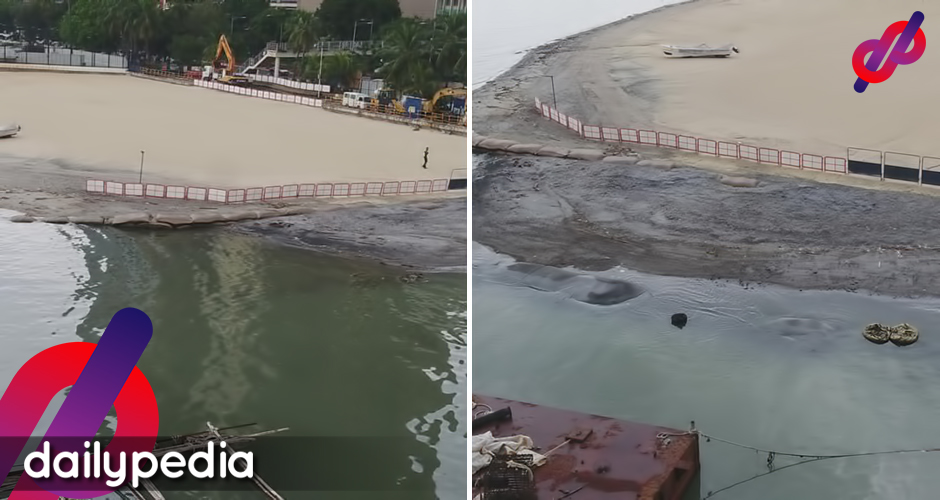The ‘fake’ Manila Bay white sand beach today looks a lot different from its opening several weeks ago.
The synthetic white sand made from crushed dolomite is visibly starting to get washed away.

A huge portion of the “beach” is visibly getting darker in color, as seen in photos shared online.
The controversial 389-million peso project according to Presidential Spokesman Harry Roque was good for the mental health of the people, leading many to ridicule him for saying such.
After it had temporarily closed, sandbags were seen along the beach. According to DENR USec. Benny Antiporda, the sandbags were placed to prevent visitors from going too far.
He also said that the dolomite white sand “was not being washed away”, but photos say otherwise.
LOOK: Sandbags were placed along the shore of Manila Bay where the crushed dolomite were dumped as part of the DENR's beautification project. | via George Calvelo and Val Cuenca, ABS-CBN News pic.twitter.com/1H2lQiGqVe
— ABS-CBN News (@ABSCBNNews) September 23, 2020
“Ito po ay protektado ng mga geotubes at geotextile. Hindi po mae-erode ng madalian iyan. Kung magkaroon man, hindi po ganoon ka-grabe (sic) ang magiging erosion diyan,” Antiporda previously said.
The DENR also promised to contact the contractors in the even the white sand is washed off.
The new photos showing Manila Bay’s current situation elicited reactions from netizens, and most of them weren’t positive.
Quick, sand https://t.co/mXXIcuzHqa
— Jeff Canoy (@jeffcanoy) October 6, 2020
https://twitter.com/KorekKaJohn/status/1313367245658021890?s=20
https://twitter.com/PinoyAkoBlog/status/1313369019378855936?s=20
https://twitter.com/barnabychuck/status/1313373627471986688?s=20
https://twitter.com/astrudcarl/status/1313459544681582592?s=20
https://twitter.com/BrujaDelDemonio/status/1313382917163249664?s=20
https://twitter.com/jesellii/status/1313388981405401088?s=20
https://twitter.com/MercyLasam/status/1313390537890619394?s=20
One of the major criticisms that arose during the execution of the project was that La Niña or the rainy season was coming soon which means the rain would just wash away the fake white sand.
The Philippine Atmospheric, Geophysical and Astronomical Services Administration recently said that people should expect more rainy days, adding that the cool weathers will most likely last until the first quarter of 2021.
“Nag start na po ang La Niña kaya nagbibigay na po tayo ng advisory. La Niña is present in the Tropical Pacific,” said Ana Solis, PAGASA’s chief of climate monitoring and prediction section.
La Niña is described as the below-normal sea surface temperatures in the Pacific Ocean near the equator that has been caused by shifting wind patterns in the atmosphere.
PAGASA said that the rainy season shouldn’t be too strong but every La Niña is unpredictable. It said that Bicol region, MIMAROPA, and Eastern Visayas, and Eastern Mindanao would be the most affected areas.
The weather bureau also warned that flooding, diseases such as cholera and leptospirosis, can make life harder amid the pandemic so local governments should establish evacuation centers to separate COVID-19 patients from others.
PAGASA then advised people to still observe health protocols.


